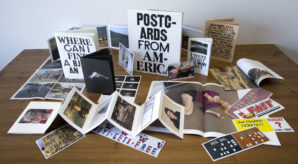
 Every advertiser knows that strong visuals and bold advertisements capture the attention and imagination of a consumer. Much of the advertisements in the modern world still capitalize on the technology available in print. Since many business owners need to create advertisements, brochures, flyers, and stationery, print is an increasingly important medium to understand. Read on to learn more about the basics of printing.
Every advertiser knows that strong visuals and bold advertisements capture the attention and imagination of a consumer. Much of the advertisements in the modern world still capitalize on the technology available in print. Since many business owners need to create advertisements, brochures, flyers, and stationery, print is an increasingly important medium to understand. Read on to learn more about the basics of printing.
The Process
There are several different printing options available, but the four major types include desktop printing, digital printing, offset lithography, and engraving. Each of these has its own special features and benefits, as well as specific purpose in the printing industry.
Desktop printing is the simplest printing process available. It’s the one everyone is familiar with and it’s uses the average, consumer printer, as well as special feature office printers. This category is the one the average person uses to print simple, one-time projects without difficult formatting or complex images. Desktop printing uses traditional, cheap ink cartridges.
Digital printing is most appropriate for larger projects. If you’re running a business that needs hundreds of copies of brochures or postcards, using digital printing is the easiest route. Modern digital printers can be used to print everything from small, postcard flyers to complicated, 3D pieces. Digital printing is also one of the fastest printing processes and it’s an affordable option for people who need to print in large volume.
Offset lithography is an industrial printing press process. Printed images are transferred onto a rubber plate and then rolled onto the surface that needs to be printed. This process is used by newspaper companies, book printing industries, and large scale projects that require thousands of pages of the same content.
Engraving is generally used for formal events, as it’s a slow and expensive type of printing. Wedding invitations and gala event cards are usually engraved. The process involves steel or copper plates engraved with text that is firmly pressed into a page to leave an impression on the paper.
While these are the most common types of printing, there are other styles as well including, flexography, gravure, thermography, and screen printing.
The Paper
Once you’ve decided on a printing style, choosing the right paper is the next step. First consider the weight of the paper, or how thick it is. Thicker paper, denoted by a higher weight, is often called cover stock and can be as thick as cardboard. Thinner paper is sometimes called text stock and can usually be found in textbooks, novels, and phone books.
The second part of choosing paper requires a specific paper style. There are a few options, including coated, uncoated, glossy, and matte. Coated paper is generally resistant to spills and smudges, while uncoated papers can easily be written on.
Glossy finishes—what you see in photographs—is a long lasting treatment with UV protection. A matte finish has no reflection or shiny surface and is great for business cards and stationery, but it fades relatively quickly.
The Colors
There are three main categories of colors that define printing: CMYK, RGB, and the Pantone Matching System. Choosing one of these styles helps you maintain color consistency across every single print and material.
The most common color platform, CMYK—also known as the four color process—uses cyan, magenta, yellow, and black layers to print an image. These colors can be mixed together to create different hues, each with a specified code that can be used to inform a printer of the right color tone for your project.
The Pantone Matching System is another popular standardized matching style that uses a kit to ensure colors match perfectly. The Pantone color palette has 1,114 option to choose from, each with its own numerical designation in coated, uncoated, and glossy paper styles.
Digital technology, like computers, scanners, and cameras, use the RGB spectrum to display colors correctly. RGB, red, green, and blue, cannot always be converted into the Pantone or CMYK systems which is why many designers avoid using it.When you send out a printing job to any designer, you must specify your color system and include the numerical values of the colors you want to use.
Customization
There are many ways you can customize a printing job to impress customers and clients. To personalize your printed materials you can use:
- Die cutting
- Hot foil stamping
- Embossing
- Metallic or specialty inks
- Large format text
You can combine any of these options to create an incredibly unique collection of printed materials.
The Power of Printing
Printing has a power over people that even digital media can’t replicate. Being able to physically touch a promotional piece ensures a sensory experience that is always memorable. When you’re launching your brand, campaigning for awareness, or advertising a sale, consider using both digital and print mediums to ensure your message is heard.

Leave Your Comments